Themed collection Journal of Materials Chemistry A Recent Review Articles

Emerging high-entropy coordination compounds and their derivatives for energy application
This highlight focuses on the advancements in high-entropy coordination compounds and their derivatives. It explores their synthesis strategies, effectiveness in catalyzing water electrolysis, and electrochemical performance in secondary batteries.

J. Mater. Chem. A, 2023,11, 20872-20885
https://doi.org/10.1039/D3TA03500J
Emerging high entropy metal sulphides and phosphides for electrochemical water splitting
This review highlights recent advances in high entropy metal sulfides and phosphides (HEMSs/Ps), their classification, synthesis approaches, crystal structures and morphologies, and applications in electrochemical water splitting.

J. Mater. Chem. A, 2023,11, 10463-10472
https://doi.org/10.1039/D2TA10081A
Crystal structures in state-of-the-art non-fullerene electron acceptors
The relationship between molecular design strategies, the packing information of small molecule acceptors is demonstrated. This review highlights the recent advances in the study of single crystal structures of non-fullerene acceptors (NFAs).
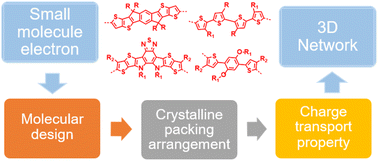
J. Mater. Chem. A, 2023,11, 481-494
https://doi.org/10.1039/D2TA08367A
Revani diffusion model in Cu(In,Ga)Se2
Sodium doping has multifaceted effects in Cu(In,Ga)Se2, some of which remain unsolved since 1993. Here, we propose a thought experiment to unravel them. The Frank–Turnbull alkali ion diffusion hypothesis brings about anisotropy-induced fluctuations.
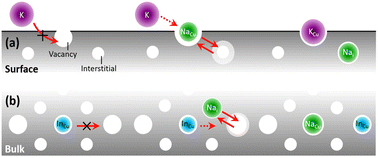
J. Mater. Chem. A, 2023,11, 26426-26434
https://doi.org/10.1039/D3TA03690A
Safety of lithium battery materials chemistry
This perspective discusses battery safety. A reaction zone model linking thermal runaway and fire is proposed for liquid electrolytes. On solid electrolytes, five issues require further study. Safety modelling that accelerates R&D is also mentioned.
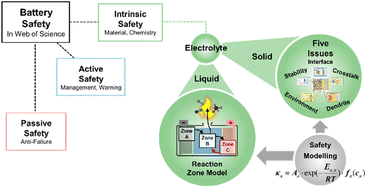
J. Mater. Chem. A, 2023,11, 25236-25246
https://doi.org/10.1039/D3TA04182D
Recent progress and perspectives on heteroatom doping of hematite photoanodes for photoelectrochemical water splitting
Over the past few decades, extensive research on photoelectrochemical (PEC) water splitting has been conducted as a promising solution to meet the increasing demand for cleaner and renewable energy in a sustainable manner.

J. Mater. Chem. A, 2023,11, 24551-24565
https://doi.org/10.1039/D3TA04520J
Atomic metal coordinated to nitrogen-doped carbon electrocatalysts for proton exchange membrane fuel cells: a perspective on progress, pitfalls and prospectives
This Perspective highlights past achievements, knowledge gaps and future research directions for M-N-C catalysts for PEMFCs.

J. Mater. Chem. A, 2023,11, 23211-23222
https://doi.org/10.1039/D3TA04711C
Recent advances in photocatalyst sheet development and challenges for cost-effective solar hydrogen production
This article presents progress and challenges in the development of photocatalyst sheets for scalable efficient production of renewable hydrogen via water splitting reaction.

J. Mater. Chem. A, 2023,11, 20470-20479
https://doi.org/10.1039/D3TA04353C
Metal–organic frameworks for hydrocarbon separation: design, progress, and challenges
Energy-efficient hydrocarbon separation is of great significance. In this perspective, we discuss three main strategies in the design of MOF materials for hydrocarbon separation: surface engineering, molecular docking, and size exclusion.

J. Mater. Chem. A, 2023,11, 20459-20469
https://doi.org/10.1039/D3TA03852A
Progressing thin-film membrane designs for post-combustion CO2 capture: performance or practicality?
Thin-film composite membranes demonstrate tremendous potential for energy-efficient CO2 capture from power generation, but many technical hurdles are to be overcome before practical, better-performing and cost-effective designs could be realized.
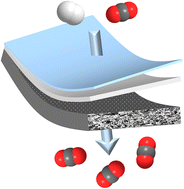
J. Mater. Chem. A, 2023,11, 17452-17478
https://doi.org/10.1039/D3TA02842A
2D transition metal-based phospho-chalcogenides and their applications in photocatalytic and electrocatalytic hydrogen evolution reactions
Band gap tunability and good electronic conductivity makes 2D MPX3 systems as potential candidates for photocatalytic and electrocatalytic HER. The generation of heterojunction between 2D MPX3 with other HER active materials further enhances the MPX3 activity and stability.

J. Mater. Chem. A, 2023,11, 16933-16962
https://doi.org/10.1039/D3TA01629C
Advanced engineering strategies for Li2S cathodes in lithium–sulfur batteries
This review comprehensively explores the diverse strategies of Li2S engineering and examines potential avenues for enhancing structural stability and electrochemical performance.
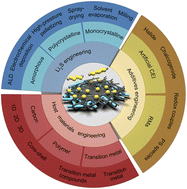
J. Mater. Chem. A, 2023,11, 26318-26339
https://doi.org/10.1039/D3TA06057H
A review on photochemical sensors for lithium ion detection: relationship between the structure and performance
Detection and sensing of lithium ions are very important in chemical, environmental, and biological processes. Photochemical sensors including fluorescent compounds have been used as smart systems to detect and sense lithium ions.

J. Mater. Chem. A, 2023,11, 26371-26392
https://doi.org/10.1039/D3TA06113B
Expanding the horizons of covalent organic frameworks: sub-stoichiometric synthesis as an emerging toolkit for functional COFs
Type III COFs are constructed using sub-stoichiometric synthesis and result in unconventional topologies and active functional groups with a variety of applications.

J. Mater. Chem. A, 2023,11, 26340-26370
https://doi.org/10.1039/D3TA05715A
Perylene-diimide for organic solar cells: current scenario and prospects in molecular geometric, functionalization, and optoelectronic properties
This review highlights key features of PDA-NFA: molecular design, diverse grafting sites, advanced synthesis, morphology control, and optimized device performance. This review provides a vision for high-performance PDA-NFA for NF-OSCs.
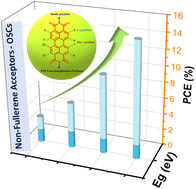
J. Mater. Chem. A, 2023,11, 26393-26425
https://doi.org/10.1039/D3TA04925F
Nanocomposite electrodes as a new opportunity to transform the performance of solid oxide cells
The versatility and tunability of nanocomposites revolutionize the performance of SOCs for more efficient and reliable energy conversion systems. This review sheds light on their unique advantages over conventional materials as a gamechanger.
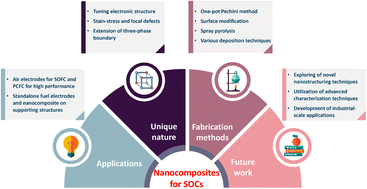
J. Mater. Chem. A, 2023,11, 25803-25824
https://doi.org/10.1039/D3TA05430F
Pore engineering of metal–organic frameworks for boosting low-pressure CO2 capture
This review summarizes recent advances in the pore engineering of metal–organic framework-based materials for boosting carbon dioxide capture by highlighting the structure–performance relationships.
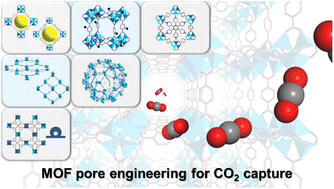
J. Mater. Chem. A, 2023,11, 25784-25802
https://doi.org/10.1039/D3TA05413F
Pernicious effects and management of lead leakage from perovskite solar cells
The potential threats of lead to the environment and biological species are discussed, followed by a summary of the advances in developing functional materials and effective techniques to prevent lead leakage.
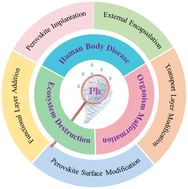
J. Mater. Chem. A, 2023,11, 25825-25848
https://doi.org/10.1039/D3TA04782B
Metal–air batteries for powering robots
By investigating the technological development of metal–air batteries in terms of specific energy, cycle life, fast charging, environmental adaptability and flexibility, we propose the application of metal–air batteries for powering robotic devices.

J. Mater. Chem. A, 2023,11, 25115-25135
https://doi.org/10.1039/D3TA05276A
Influence of triphenylamine derivatives in efficient dye-sensitized/organic solar cells
Highly efficient small organic triphenylamines (TPAs) molecules used in DSCs and OSCs with their cost-effectiveness and straightforward synthesis methods.
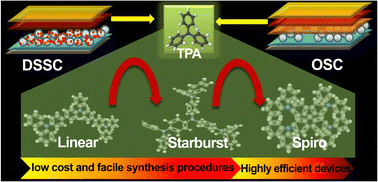
J. Mater. Chem. A, 2023,11, 25136-25215
https://doi.org/10.1039/D3TA03585A
Janus smart materials with asymmetrical wettability for on-demand oil/water separation: a comprehensive review
Janus materials with asymmetrical wettability for on-demand oil/water separation.
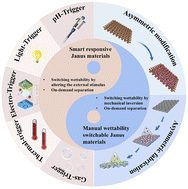
J. Mater. Chem. A, 2023,11, 25093-25114
https://doi.org/10.1039/D3TA04160C
Post-synthesis modification of metal–organic frameworks: synthesis, characteristics, and applications
Post-synthesis modification (PSM) is an efficient means to introduce functional chemical groups into metal–organic frameworks (MOFs) by modifying metal clusters or ligands after MOFs have been synthesized.
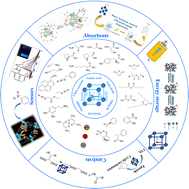
J. Mater. Chem. A, 2023,11, 24519-24550
https://doi.org/10.1039/D3TA05158G
Material selection and performance optimization strategies for a wearable friction nanogenerator (W-TENG)
This review summarizes the research progress of wearable friction nanogenerators (W-TENG). Its perspective comprehensively covers the friction layer, the electrodes, and strategies for improving the triboelectric output of the W-TENG.
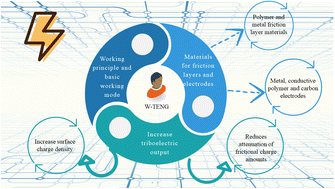
J. Mater. Chem. A, 2023,11, 24454-24481
https://doi.org/10.1039/D3TA04710E
Research progress of transition-metal dichalcogenides for the hydrogen evolution reaction
In this review, five common preparation methods of TMDs are summarized, and then the mechanisms of five regulatory strategies are analyzed from the perspective of density functional theory, suggesting the potential of TMDs as HER electrocatalysts.

J. Mater. Chem. A, 2023,11, 24434-24453
https://doi.org/10.1039/D3TA04475K
Basic guidelines of first-principles calculations for suitable selection of electrochemical Li storage materials: a review
This study provides deep insights into how computational methods complement and enhance experimental investigations.
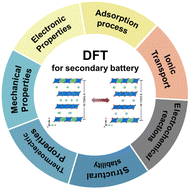
J. Mater. Chem. A, 2023,11, 24482-24518
https://doi.org/10.1039/D3TA05042D
Nanostructured metal oxide heterojunctions for chemiresistive gas sensors
Metal oxides have been extensively used in environmental monitoring, breath analysis, and food quality assessment. This review summarizes the effects of nanoscale heterojunctions on enhancing the gas-sensing performance of metal oxide devices.
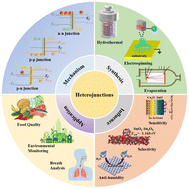
J. Mater. Chem. A, 2023,11, 23742-23771
https://doi.org/10.1039/D3TA04953A
Cu2ZnSnS4 monograin layer solar cells for flexible photovoltaic applications
This review provides a comprehensive overview of the significant advancements made in CZTS monograin powder technology and its applications in flexible solar cells over the past decade.

J. Mater. Chem. A, 2023,11, 23640-23652
https://doi.org/10.1039/D3TA04541B
Defect engineering: the role of cationic vacancies in photocatalysis and electrocatalysis
Defect engineering is an effective strategy to control the performance of photocatalyst and electrocatalyst. This review highlights the key role of cationic vacancy from the aspects of synthesis methods, testing techniques and applications.
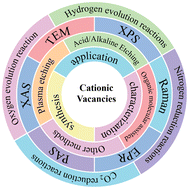
J. Mater. Chem. A, 2023,11, 23653-23682
https://doi.org/10.1039/D3TA04947G
Recent progress in polymer nanosheets for photocatalysis
Polymer nanosheets (CMPs, COFs, CTFs and carbon nitrides) have many unique advantages. This review summarizes the recent advances in polymer nanosheets for efficient photocatalysis including water splitting, pollutant degradation and CO2 reduction.
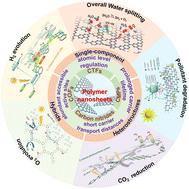
J. Mater. Chem. A, 2023,11, 23720-23741
https://doi.org/10.1039/D3TA05435G
Carbon dot engineered membranes for separation – a comprehensive review and current challenges
Carbon dot-engineered nanocomposite membranes: an emerging membrane separation technology.
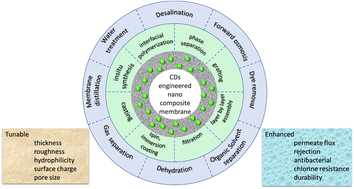
J. Mater. Chem. A, 2023,11, 23683-23719
https://doi.org/10.1039/D3TA03016D
Exploring the potential of triple conducting perovskite cathodes for high-performance solid oxide fuel cells: a comprehensive review
We report many factors that affect the uptake and conduction of ions of triple conducting perovskites (TCPs) and the current research progress of TCPs by dividing TCPs into three categories.
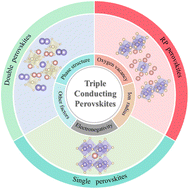
J. Mater. Chem. A, 2023,11, 23613-23639
https://doi.org/10.1039/D3TA05035A
Size effects of supported Cu-based catalysts for the electrocatalytic CO2 reduction reaction
From the perspective of the size of Cu species on supported substrates, this review summarizes the size effects of supported Cu-based single atoms, diatoms, clusters and nanoparticles on the catalytic activity and selectivity of the CO2 reduction reaction.
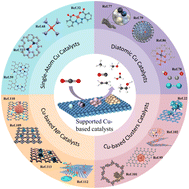
J. Mater. Chem. A, 2023,11, 23188-23210
https://doi.org/10.1039/D3TA04929A
Boron carbon nitride (BCN): an emerging two-dimensional nanomaterial for supercapacitors
This review describes the recent developments on the synthesis methods and properties of boron carbon nitride (BCN). The supercapacitor electrode preparation and testing of BCN and BCN-based hybrids/heterostructures/nanocomposites are also included.

J. Mater. Chem. A, 2023,11, 23148-23187
https://doi.org/10.1039/D3TA05074B
Efficient electrochemical upgradation strategies for the biomass derivative furfural
This review interprets the electro-oxidation/reduction and paired electrochemical reactions of furfural from the perspective of energy optimization, with a focus on the study of electrocatalysts, mechanisms, and reactors.
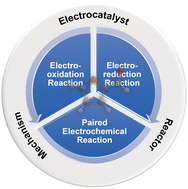
J. Mater. Chem. A, 2023,11, 23133-23147
https://doi.org/10.1039/D3TA03813K
The metal–support interaction effect in the carbon-free PEMFC cathode catalysts
The metal–support interaction effect in the carbon-free PEMFCs cathode catalysts are summarized in this review.
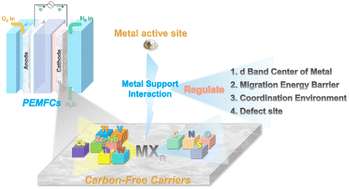
J. Mater. Chem. A, 2023,11, 23106-23132
https://doi.org/10.1039/D3TA04792J
Recent advances in synthesis of water-stable metal halide perovskites and photocatalytic applications
This review summarizes recent approaches for stabilizing metal halide perovskites in water, including surface engineering, common-ion effect, and intrinsic water stability as well as their photocatalytic applications.
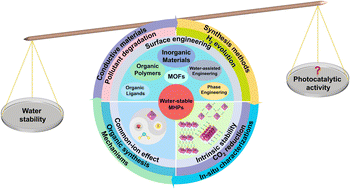
J. Mater. Chem. A, 2023,11, 22656-22687
https://doi.org/10.1039/D3TA04994A
Reticular materials for wastewater treatment
The competitive advantages and limitations based on the infrastructure of reticular materials for wastewater treatment applications were systematically evaluated.
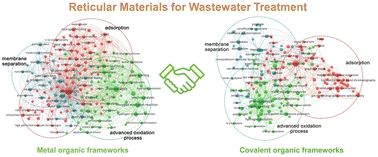
J. Mater. Chem. A, 2023,11, 22631-22655
https://doi.org/10.1039/D3TA04885C
Advances in ultrasound-assisted photocatalyst synthesis and piezo-photocatalysts
TThe review summarizes progress in ultrasound-assisted photocatalyst synthesis and piezo-photocatalysis, including principles, advantages, applications in water splitting, CO2 conversion, water purification, VOCs removal.
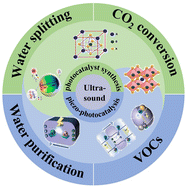
J. Mater. Chem. A, 2023,11, 22608-22630
https://doi.org/10.1039/D3TA05125K
Uranium and lithium extraction from seawater: challenges and opportunities for a sustainable energy future
Our analysis of the current literature shows that advances in extractive technologies for U/Li recovery lie at the intersection between molecular simulation, nanotechnology and materials science, electrochemistry, and membrane engineering.
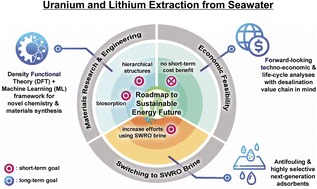
J. Mater. Chem. A, 2023,11, 22551-22589
https://doi.org/10.1039/D3TA05099H
Emerging two-dimensional materials for the electrocatalytic nitrogen reduction reaction to yield ammonia
We summarize the important progress in the electroreduction of N2 to NH3 using state-of-the-art two-dimensional (2D) electrocatalysts. Emerging 2D materials that could potentially serve as viable NRR electrocatalysts are presented.

J. Mater. Chem. A, 2023,11, 22590-22607
https://doi.org/10.1039/D3TA04848A
Electrolyte designs for safer lithium-ion and lithium-metal batteries
This review summarizes the safety challenges in LIBs and LMBs and outlines the recent safety advances in electrolytes for safer batteries. These novel approaches were further evaluated critically to determine their effectiveness for safer batteries.

J. Mater. Chem. A, 2023,11, 22688-22717
https://doi.org/10.1039/D3TA02916F
Prospects of copper–bismuth chalcogenide absorbers for photovoltaics and photoelectrocatalysis
The distinct electronic structure of the Cu3BiS3 compound (wittichenite) leads high optical absorption and suitable bandgap, making it promising for photovoltaics and photoelectrochemical applications.

J. Mater. Chem. A, 2023,11, 22087-22104
https://doi.org/10.1039/D3TA03564F
Atmospheric water extraction – a review from materials to devices
Sorption-based atmospheric water harvesting (SAWH) can turn humidity into liquid water to provide clean freshwater. This review aims to summarize the recent progress on water vapor sorbents and water production devices of SAWH.

J. Mater. Chem. A, 2023,11, 22041-22057
https://doi.org/10.1039/D3TA04380K
Coordination modulation: a way to improve the properties of metal–organic frameworks
Coordination modulation is an easy and effective procedure to control the properties of metal–organic frameworks (MOFs) in order to increase their potential application and/or desirable structural properties.
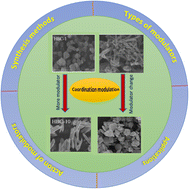
J. Mater. Chem. A, 2023,11, 22105-22131
https://doi.org/10.1039/D3TA03077F
Recent progress in metal halide perovskite-based photocatalysts: physicochemical properties, synthetic strategies, and solar-driven applications
Metal halide perovskite (MHP) materials have garnered significant interest in the realm of energy conversion and storage amid the push for carbon-neutral energy solutions due to the tunable band gap, high light collection efficiency, high photogenerated carrier mobility, and high defect tolerance.
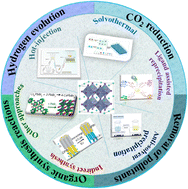
J. Mater. Chem. A, 2023,11, 22058-22086
https://doi.org/10.1039/D3TA04149B
Phase engineering of inorganic halide Cs–Pb–Br perovskites for advanced energy conversion
All-inorganic metal halide perovskites have been actively investigated as promising energy-converting materials for abundant applications owing to their excellent electronic and optical properties.

J. Mater. Chem. A, 2023,11, 22020-22040
https://doi.org/10.1039/D3TA02909C
Metal–organic frameworks and covalent organic frameworks as photocatalysts for H2O2 production from oxygen and water
This review provides a detailed overview of the application of MOFs and COFs for photocatalytic H2O2 production from O2 and/or H2O.
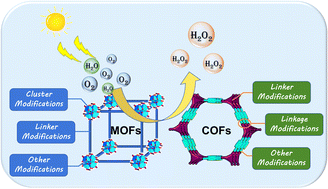
J. Mater. Chem. A, 2023,11, 21516-21540
https://doi.org/10.1039/D3TA04581A
Advances and challenges in membrane electrode assembly electrolyzers for CO2 reduction
This review emphasizes the fundamentals of MEA construction, different technical routes, and remaining challenges and opportunities for MEA for large-scale electrochemical CO2 reduction applications.
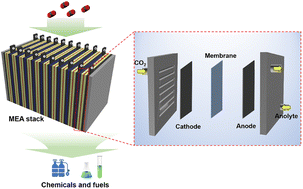
J. Mater. Chem. A, 2023,11, 21498-21515
https://doi.org/10.1039/D3TA03757F
Strategies to improve the photocatalytic performance of covalent triazine frameworks
Various strategies for improving the photocatalytic performance of covalent triazine frameworks, including molecular design, structural regulation and the creation of heterostructures, are summarized.
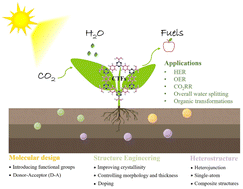
J. Mater. Chem. A, 2023,11, 21470-21497
https://doi.org/10.1039/D3TA04472F
Recent progress in anion exchange membranes (AEMs) in water electrolysis: synthesis, physio-chemical analysis, properties, and applications
An overview of recent advancements in anion exchange membranes (AEMs) and their performance in water electrolysis is provided, and the progress of an electrocatalyst for anion exchange membrane water electrolysis (AEMWE) is also discussed.

J. Mater. Chem. A, 2023,11, 20886-21008
https://doi.org/10.1039/D3TA04298G
Liquid interfaces: an emerging platform for energy conversion and harvesting
Liquid interfaces are versatile platforms to enable both chemical and physical reactions, which offers great opportunities to realize energy conversion and harvesting, thus providing more opportunities for obtaining clean energy.
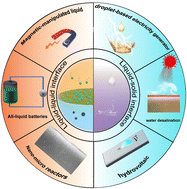
J. Mater. Chem. A, 2023,11, 21009-21028
https://doi.org/10.1039/D3TA03760F
Reinforcing ionic conductivity and alleviating dendrite propagation of dense cubic Ga0.3Li6.1La3Zr2O12via two-step sintering
Garnet-type Li7La3Zr2O12 (LLZO) has emerged as a promising candidate to supersede the liquid electrolytes in lithium-ion batteries.

J. Mater. Chem. A, 2023,11, 20408-20422
https://doi.org/10.1039/D3TA02627B
Reticular chemistry within three-dimensional covalent organic frameworks for multiple applications
This review summarizes the advances in rational design and synthesis of 3D COFs guided by reticular chemistry and briefly discusses recent progress in gas storage and separation, catalysis, fluorescence, batteries, conductivity, and drug delivery.

J. Mater. Chem. A, 2023,11, 20368-20382
https://doi.org/10.1039/D3TA04395A
Metal–organic frameworks on versatile substrates
The potential commercial uses of metal–organic frameworks (MOFs) are intriguing.
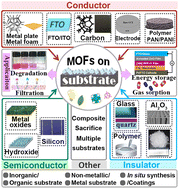
J. Mater. Chem. A, 2023,11, 20423-20458
https://doi.org/10.1039/D3TA03231K
Opportunities and challenges of hydrotalcite-related electrocatalysts for seawater splitting: a systematic perspective from materials synthesis, characterization and application
Hydrotalcites and their related materials hold great potential to unlock seawater splitting effectively.
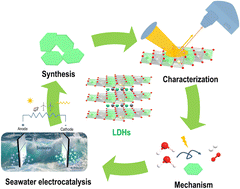
J. Mater. Chem. A, 2023,11, 20383-20407
https://doi.org/10.1039/D3TA02524A
A review of silicon oxycarbide ceramics as next generation anode materials for lithium-ion batteries and other electrochemical applications
The present review outlines a comprehensive overview of the research on silicon oxycarbide (SiOC) materials, which are synthesized by various synthetic routes and are investigated as alternatives to crystalline silicon anodes.
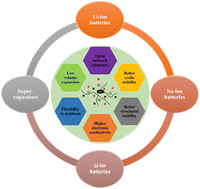
J. Mater. Chem. A, 2023,11, 20324-20348
https://doi.org/10.1039/D3TA01366A
Uncovering the photoelectronic/catalytic property modulation and applications of 2D MoS2: from the perspective of constructing heterogeneous interfaces
2D polyphase molybdenum disulfide (MoS2) has become a popular material for energy conversion and interdisciplinary applications.

J. Mater. Chem. A, 2023,11, 19736-19763
https://doi.org/10.1039/D3TA03441K
Recent advances in MXenes: a future of nanotechnologies
Two-dimensional (2D) materials are amongst the most interesting scientific research materials in the twenty-first century.

J. Mater. Chem. A, 2023,11, 19764-19811
https://doi.org/10.1039/D3TA03069E
Tailoring supports for enhancing the electrocatalytic hydrogen evolution performance of platinum species: a review
Recent advances and perspectives in utilizing various supports to maximize the HER performance of Pt species are reviewed, along with the strategies for tailoring supports and future challenges and opportunities for regulating supports.
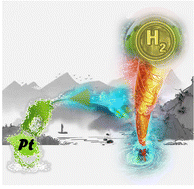
J. Mater. Chem. A, 2023,11, 19812-19844
https://doi.org/10.1039/D3TA04199A
Construction of cerium-based oxide catalysts with abundant defects/vacancies and their application to catalytic elimination of air pollutants
This article focuses on the preparation of cerium-based oxide catalysts with vacancies/defects and their catalytic purification properties for air pollutants.
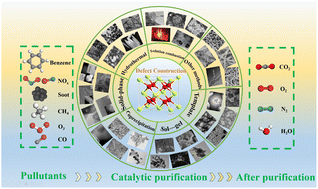
J. Mater. Chem. A, 2023,11, 19210-19243
https://doi.org/10.1039/D3TA03310D
The value of in situ/operando Raman spectroscopy in all-solid-state Li batteries
The review focuses on the use of in situ/operando Raman spectroscopy to explore electrodes, solid electrolytes, and electrode–solid electrolyte interfaces in all-solid-state Li batteries.
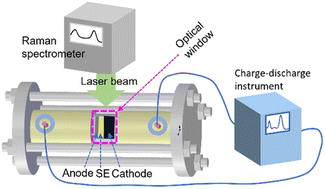
J. Mater. Chem. A, 2023,11, 19195-19209
https://doi.org/10.1039/D3TA03514J
Behind the gas sensors: revealing sensing mechanisms with advanced magnetic resonance technology
In this work, we reviewed the progress of magnetic resonance in gas sensing, by providing advancements in magnetic resonance-based techniques for investigating gas sensors, encompassing the determination of the structure of sensing materials and the elucidation of sensing mechanisms.
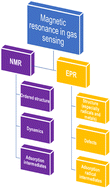
J. Mater. Chem. A, 2023,11, 19281-19297
https://doi.org/10.1039/D3TA03686C
Triboelectric nanogenerator assisted synthesis and detection of chemical compounds
This article comprehensively reviews the recent progress in chemical compound synthesis and detection using triboelectric nanogenerators (TENGs). Current limitations and challenges important for future development in these fields were also addressed.
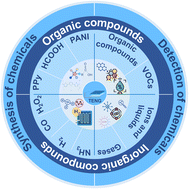
J. Mater. Chem. A, 2023,11, 19244-19280
https://doi.org/10.1039/D3TA03572G
Intermediates and their conversion into highly selective multicarbons in photo/electrocatalytic CO2 reduction reactions
Reactive intermediates and their transformations in photocatalytic and electrocatalytic CO2 reduction are reviewed to get highly selective multicarbon production.
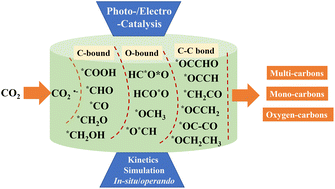
J. Mater. Chem. A, 2023,11, 19172-19194
https://doi.org/10.1039/D3TA01712E
Photo-assisted rechargeable batteries: principles, performance, and development
This article starts with the working mechanism and combines the research history to introduce the modification methods and applications of photoassisted batteries. Finally, the challenges and prospects in this field were summarized.
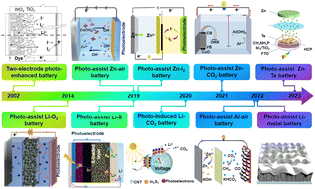
J. Mater. Chem. A, 2023,11, 18605-18625
https://doi.org/10.1039/D3TA03974A
PEDOT:PSS materials for optoelectronics, thermoelectrics, and flexible and stretchable electronics
Cutting-edge approaches to prepare PEDOT:PSS films/electrodes, significant progress on related devices are summarized; advantages, plausible questions, challenges, and suggestions are also presented for the continued development of modern electronics.
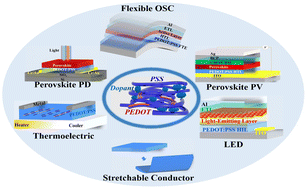
J. Mater. Chem. A, 2023,11, 18561-18591
https://doi.org/10.1039/D3TA03213B
Recent advances in two-dimensional nanomaterials as bifunctional electrocatalysts for full water splitting
Recent advances in two-dimensional bifunctional electrocatalysts for full water splitting are systematically reviewed, discussing challenges and opportunities for further research.

J. Mater. Chem. A, 2023,11, 18502-18529
https://doi.org/10.1039/D3TA02293E
Energy harvesting technology based on moisture-responsive actuators
The moisture-responsive actuator converts the hygroscopic swelling of a material into controllable mechanical motion, which can be used as a high-performance actuator component to harvest electrical energy from environmental moisture.
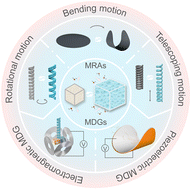
J. Mater. Chem. A, 2023,11, 18530-18560
https://doi.org/10.1039/D3TA02644B
Recent progress in films with nanoengineered surfaces via bubble-induced self-assembly for energy applications
Films with nanoengineered surfaces can be generated by the bubble-induced self-assembly (BISA) for a variety of energy-related applications.

J. Mater. Chem. A, 2023,11, 18478-18501
https://doi.org/10.1039/D3TA03220E
Recent advances in aqueous zinc–sulfur batteries: overcoming challenges for sustainable energy storage
This review outlines recent progress in aqueous zinc–sulfur batteries, highlighting electrolyte modification, additive engineering, and cathode enhancements. It also proposes future research directions to inspire solutions for overcoming challenges.
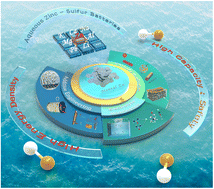
J. Mater. Chem. A, 2023,11, 18029-18045
https://doi.org/10.1039/D3TA03338D
About this collection
This collection contains recent Review-type articles published by Journal of Materials Chemistry A, the home for high impact applications, properties and synthesis of exciting new materials for energy and sustainability. New articles will be added to this collection as soon as possible after publication.